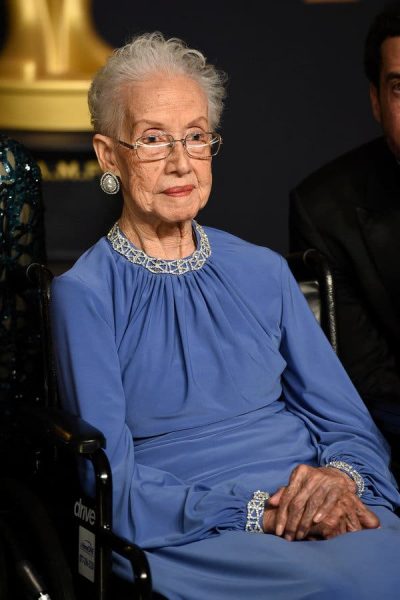Two years after I joined NASA in 1987, I was preparing for a trip to Brazil to help the United States Information Service celebrate the 20th anniversary of the Apollo 11 moon landing. The souvenir posters I would give out referred to the “first American men on the moon.” I suggested it would be more appropriate if they read “first humans on the moon.”
A male astronaut sneered at the idea and said that it had been “men who landed on the moon.”
“But it was women who helped put them there!” I pushed back.
I was referring to the countless generations of women who have done so much to support human achievements but have gone unrecognized.
Even though I was soon to become the first woman of color who went to space, at that time I did not know of the mathematician Katherine Johnson, who died on Monday at the age of 101, or of the crucial calculations she made for the Mercury, Gemini and Apollo missions.
It would have put such a fierce smile on my face had I known about Katherine Johnson, her colleagues Mary Jackson and Jackie Vaughn and the other women mathematicians at NASA when I was growing up on the South Side of Chicago in the 1960s. I always assumed that I would go into space, even though the United States had no astronauts who were women or of color at the time. I could see on TV that the mission control rooms were filled with white men. Even at 8, 9 or 10 years old, I was sure that the picture misrepresented the capabilities women and I possessed.
Though I majored in African and African-American studies as well as chemical engineering at Stanford, when I joined the NASA astronaut corps I only knew vaguely of some African-American women at NASA and in aviation. I knew of African-American men and white women who were science and exploration legends. Yet I was unfamiliar with Bessie Coleman, who became the first black woman in the world to get a pilot’s license in 1921; or Willa Brown, an African-American and the first U.S. woman to get both a pilot’s and a mechanic’s license and who lobbied the government to integrate the Army Air Corps. That helped lead to the establishment of the Tuskegee Airmen, a number of whom she trained.
It fortified me to get to know and work with Christine Darden, Patricia Cowings and other women scientists, engineers and mathematicians of all ethnicities who worked at NASA centers throughout the nation.
I am so pleased the book and movie “Hidden Figures” allowed the world to meet and celebrate Katherine Johnson and her colleagues.
Katherine Johnson was a revelation. An inspiration. But she was not a “one-off” to be put on a shelf and admired for her singular genius. She was representative of the deep well of talent and potential that is so often buried by lack of opportunity, access, exposure and expectation for women and particularly women of color in science and technical fields.
She was a beacon who heralded the contributions made by women that were hidden and stymied by the deep institutional and societal bias that accredits achievements to white men, deemed by society to be the unique holders of genius.
Johnson today is a balm for the discomfort that arises when you stand up in a crowd — a crowd that doubts your capabilities due only to your gender or race — and press a point, disagree with a widely held premise or challenge the sugar coating of facts meant to make the powerful feel better while disregarding the less powerful, who need the truth revealed.
I have been working with a group of experts to understand what is needed to achieve the equitable participation and leadership of women in STEM fields. The insight may be uncomfortable for some allies, because effective, lasting solutions demand profound change in core beliefs and behaviors.
The changes require the dismantling of a gantlet: of persistent bias, obstacles and actions that block women’s entry or push them out. It is a gantlet that has gone unacknowledged even decades after Katherine Johnson’s accomplishments at NASA. Organizations value women for their work when it aligns with the organization’s traditional perspectives; but they fall back on exclusionary behavior when new, diverse perspectives are generated or required.
Women have continued to advance within NASA — Peggy Whitson is the American astronaut who has spent the most time in space. In October, a pair of female astronauts, Christina Koch and Jessica Meir, walked in space together.
Even great organizations may be blind to persistent intersectional bias that treats African-American women so differently. As I testified before the House space and science committee in May, there have been just six African-American women astronauts; three of them have flown in space. It is confounding that of 338 NASA astronauts, two of these African-American women, of stellar accomplishments and tenures of over 10 years each, are the only American astronauts who have been denied or pulled from a spaceflight assignment without any official explanation.
While I did not meet Katherine Johnson, when I channel her, I am jazzed. Katherine Johnson is the shining example. Through her I see the possibilities when the full scope of human experience, talent and perspectives are engaged to address the challenges and opportunities to improve life on Earth for all and push the limits of our knowledge.
Dr. Mae Jemison, an engineer and physician, was the first woman of color in space.
The Times is committed to publishing a diversity of letters to the editor. We’d like to hear what you think about this or any of our articles. Here are some tips. And here’s our email: letters@nytimes.com.
Follow The New York Times Opinion section on Facebook, Twitter (@NYTopinion) and Instagram.







